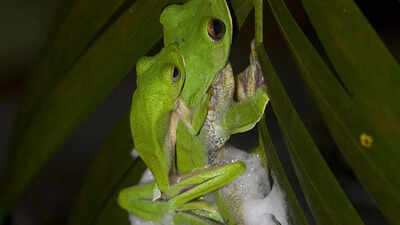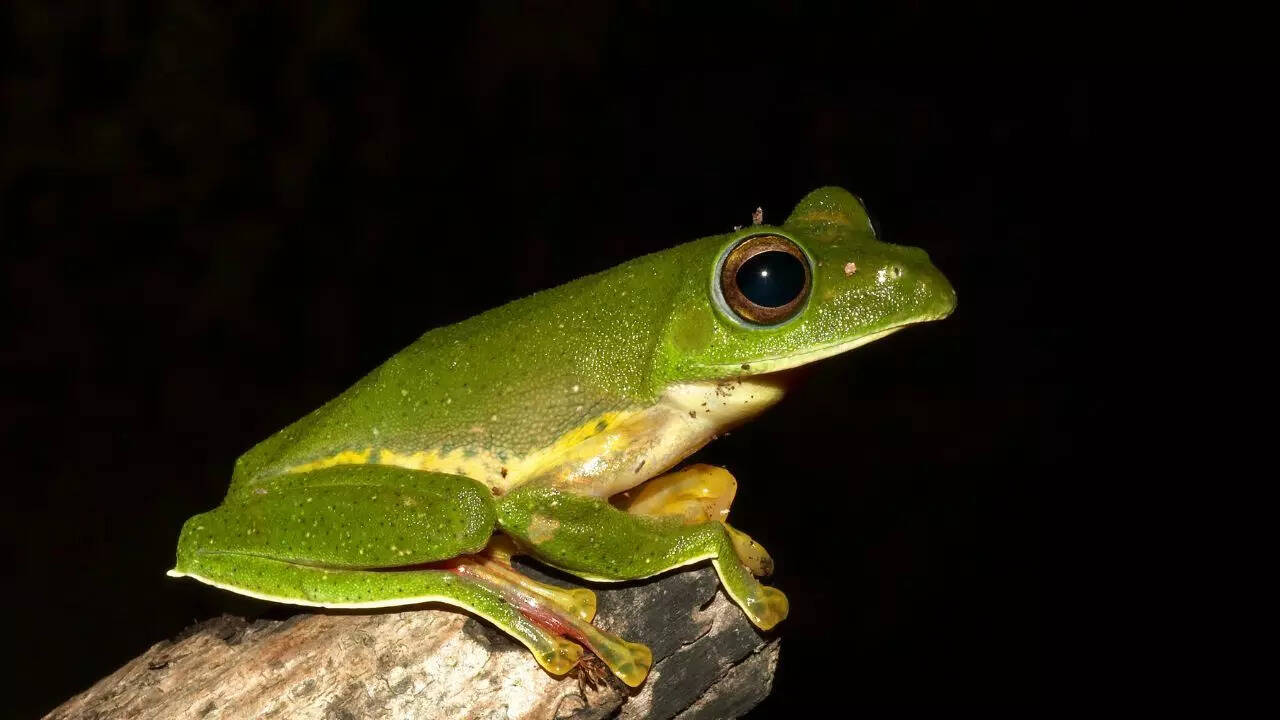ARTICLE AD BOX

High in the misty forests of the Western Ghats in India lives a frog that appears to have stepped straight out of a fantasy tale. Known as the Malabar gliding frog, this vivid green amphibian is famous for its unusual breeding behaviour and its astonishing ability to glide between trees.
Unlike most frogs that lay eggs in water, this species builds a foamy, suspended nest high above ponds and streams, carefully securing its future offspring in the treetops. During breeding, the frog stretches the webbing between its toes like a tiny parachute, allowing it to soar gracefully from branch to branch. With its treetop nesting skills and aerial movements, this remarkable frog showcases one of nature’s most ingenious survival strategies.
How the frog builds a foam nest in the treetops
When the monsoon rains arrive, the Western Ghats transform into a humid paradise, the perfect time for breeding. This is when the Malabar gliding frog performs one of nature’s most mesmerising parenting rituals.Instead of laying eggs in water like many amphibians, the female selects a tree branch or leaf positioned directly above a pond or slow-moving stream. The male then climbs onto the female’s back and holds on tightly, a mating position called amplexus, commonly observed in frogs and toads.
While attached, the male begins whipping up a white, frothy foam using a mixture of fluid produced during the breeding process.This nest can reach around three inches in diameter and acts like a soft, protective pillow. Inside the foam, the female deposits up to 200 eggs. The male fertilises them simultaneously. The foam shields the eggs from danger, drying out, predators, and intense sunlight. It is, in every sense, a natural incubator suspended in the air.
The outside of the nest eventually hardens, forming a secure layer, while the inside stays moist, cushioning and protecting the developing embryos.

From foam nest to tadpoles: Nature’s built-in landing system
After several days, the eggs begin to hatch into tiny tadpoles. Here is where nature’s engineering becomes even more surprising. As the tadpoles wriggle free from their eggs, they drop out of the nest and plunge safely into the water below. The foam nest is positioned so that gravity delivers the hatchlings directly into their aquatic nursery; no parental transport is required.Once in the water, the tadpoles begin their usual frog development cycle, feeding on algae and growing gradually until they develop legs, lose their tails, and climb out of the water like miniature adults.This beautifully coordinated sequence ensures:
- better protection from predators
- reduced risk of eggs drying out
- a safe transition from nest to water
It’s an efficient survival strategy that has evolved over thousands of years.
Why the Malabar gliding frog matters
The Malabar gliding frog is not just captivating to watch; it plays an important role in its ecosystem.
Frogs are indicators of environmental health; their presence suggests clean water and a balanced habitat. Sadly, many species in the Western Ghats are threatened by deforestation, habitat loss, and pollution.Protecting frogs like the Malabar gliding frog means preserving an entire ecosystem, including the rivers, forests, insects, and plant life that depend on it. The Malabar gliding frog shows that parenting strategies in the wild are as inventive as they are diverse.
Its airborne foam nests, acrobatic gliding skills, and unique breeding behaviour offer a window into how animals adapt to survive in competitive environments.
Next time monsoon clouds gather over the forests of southern India, remember that high in the treetops, a tiny green architect is creating a secure home, not with bricks or leaves, but with foam, patience, and astonishing instinct.Also Read: Why snakes flick their tongues so often: Hunting prey and finding potential mates

 1 hour ago
4
1 hour ago
4








 English (US) ·
English (US) ·